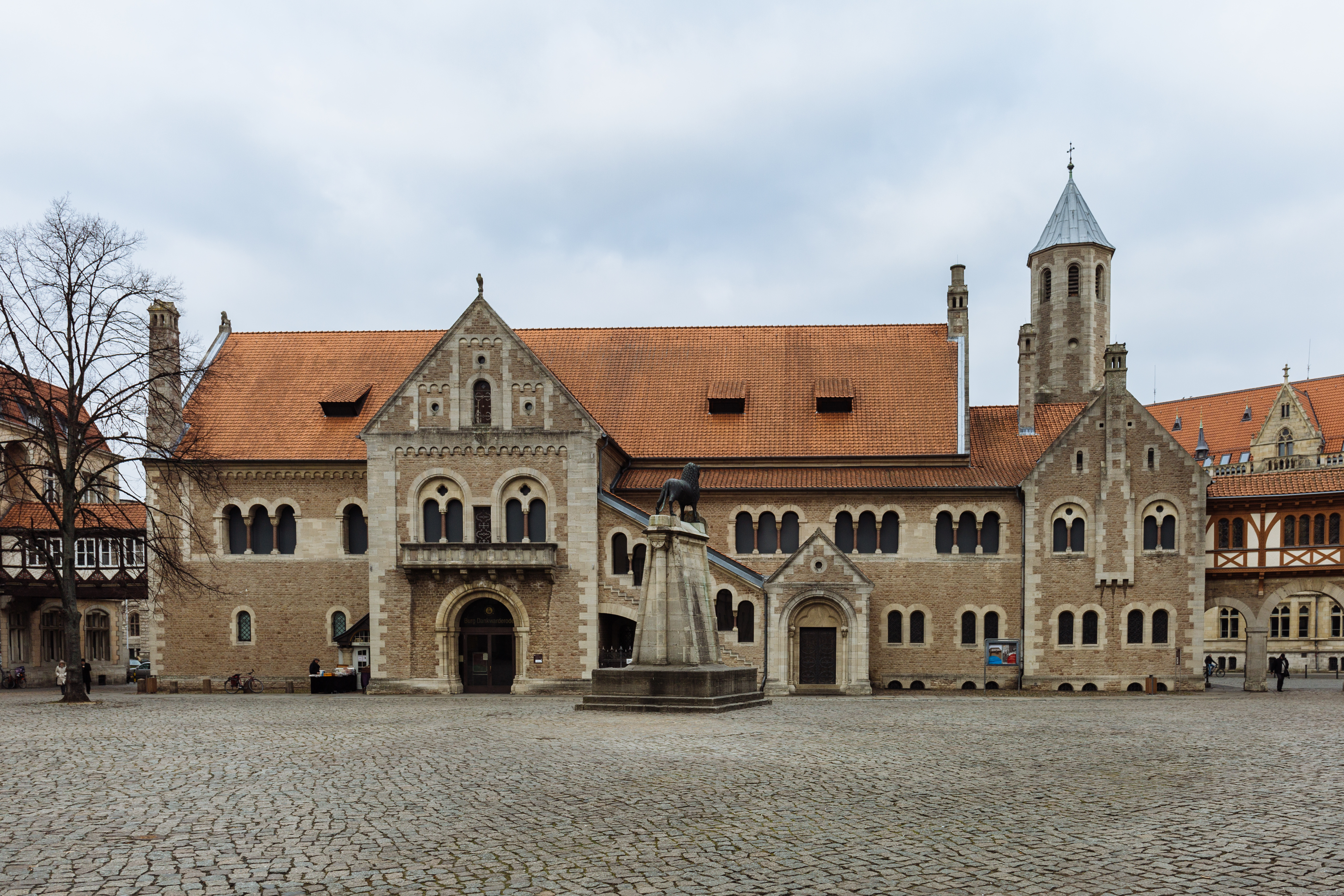Braunschweig
 Braunschweig () or Brunswick ( ; from Low German , local dialect: ) is a city in Lower Saxony, Germany, north of the Harz Mountains at the farthest navigable point of the river Oker, which connects it to the North Sea via the rivers Aller and Weser. In 2024, it had a population of 272,417. The Braunschweig-Wolfsburg-Salzgitter region had 1.02 million residents including the cities Wolfsburg and Salzgitter, it is the second largest urban center in Lower Saxony after Hanover. The urban agglomeration of Braunschweig had a population of 551,000 with almost 45% having a migration background, making it the most diverse urban agglomeration in the whole state. The city consists of 37.5% immigrants (approximately 102,000) with a high number of migrants coming from other European countries, Asia and Africa. 73% of the Germans residing in Braunschweig come from different parts of the country, particularly North Rhine Westphalia, Hessen and the former states of East Germany. Braunschweig is considered an important regiopolis. It is one of the largest regiopolitan cities in Northern Germany and the largest regiopolis in Lower Saxony. The city is seen as a major hub within the region due to it having multiple characteristics of a metropolitan city in a smaller scale or in a comparative amount to other metropolitan cities in Germany.
Braunschweig () or Brunswick ( ; from Low German , local dialect: ) is a city in Lower Saxony, Germany, north of the Harz Mountains at the farthest navigable point of the river Oker, which connects it to the North Sea via the rivers Aller and Weser. In 2024, it had a population of 272,417. The Braunschweig-Wolfsburg-Salzgitter region had 1.02 million residents including the cities Wolfsburg and Salzgitter, it is the second largest urban center in Lower Saxony after Hanover. The urban agglomeration of Braunschweig had a population of 551,000 with almost 45% having a migration background, making it the most diverse urban agglomeration in the whole state. The city consists of 37.5% immigrants (approximately 102,000) with a high number of migrants coming from other European countries, Asia and Africa. 73% of the Germans residing in Braunschweig come from different parts of the country, particularly North Rhine Westphalia, Hessen and the former states of East Germany. Braunschweig is considered an important regiopolis. It is one of the largest regiopolitan cities in Northern Germany and the largest regiopolis in Lower Saxony. The city is seen as a major hub within the region due to it having multiple characteristics of a metropolitan city in a smaller scale or in a comparative amount to other metropolitan cities in Germany.127.12 km² (49 sq. mi.) of the city's area is made up of greenspaces such as parks and forests. Braunschweig has a population density of 4,121 per km² (10,673 per sq. mi.) excluding the green areas because only about 66 km² (25½ sq. mi.) of the total area is properly urban, making it quite a dense city. Many districts of the city have a density over 4,450 people per square kilometer (11,525 per sq. mi.) such as Weststadt, Innenstadt, Westliches Ringgebiet, Nordstadt, or Östliches Ringgebiet. Due to the city's limited urban core and efforts in preserving green spaces, 81% of the residential buildings are multi-storey apartments limiting 74% of the flats with a space below 100 square meters (1000 sq. ft.). The city is constructing more residential areas within city limits so that by 2030 the population increases by 15.000 from 2014.
A powerful and influential centre of commerce in medieval Germany, Brunswick was a member of the Hanseatic League from the 13th until the 17th century. It was the capital city of three successive states: the Principality of Brunswick-Wolfenbüttel (1269–1432, 1754–1807, and 1813–1814), the Duchy of Brunswick (1814–1918), and the Free State of Brunswick (1918–1946).
Today, Brunswick is the second-largest city in Lower Saxony and a major centre of scientific research and development. Provided by Wikipedia
1
2
3
4
5
6
7
Published in Sammlung Belgard-Schivelbein
(1930)
Other Authors: ';
“...Braunschweig, Vollrath von...”Get full text
Electronic
8
Published 1930
Other Authors: ';
“...Braunschweig, Vollrath von...”
Archiv
9
Published 1987
“...Braunschweig...”
Book
10
11
Published 1963
“...Kunstverein <Braunschweig>...”
Book
12
13
14
15
Published 1958
“...Städtisches Museum <Braunschweig>...”
Book
16
Published 1976
“...Städtisches Museum <Braunschweig>...”
Book
17
18
19
Published 1966
“...Städtisches Museum <Braunschweig>...”
Book
20
Published 1982
“...Städtisches Museum <Braunschweig>...”
Book


